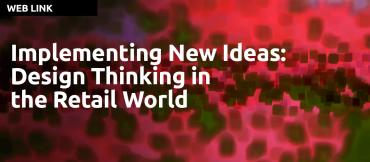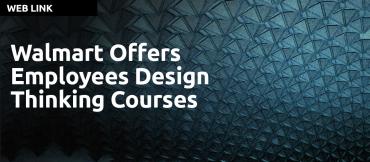
Design Thinking in the retail sector has been successfully deployed by retailers from a German Butchery to mass market retailers in the USA like Best Buy and Walmart.
Design thinking is an innovative and customer-centered approach that has been widely adopted in the retail industry. It is a problem-solving methodology that helps retailers to understand the needs and preferences of their customers, design new products and services, and improve the overall shopping experience. Here are some of the key benefits of design thinking in retail:
-
Customer-focused approach: Design thinking encourages retailers to focus on the needs of their customers. By understanding their needs, wants, and pain points, retailers can design products and services that meet their customers' expectations.
-
Innovation: Design thinking promotes a culture of innovation in retail. It encourages retailers to think creatively and come up with new ideas that can improve the shopping experience for customers.
-
Cost-effective solutions: By using design thinking, retailers can develop cost-effective solutions that are based on customer feedback and insights. This approach helps retailers to reduce the risk of investing in products or services that may not meet customer expectations.
-
Improved customer experience: Design thinking can help retailers to create a better shopping experience for customers. By focusing on the customer journey, retailers can identify areas where they can improve the experience, such as store layout, product displays, and checkout processes.
-
Increased sales: By using design thinking to create products and services that meet the needs of their customers, retailers can increase sales and customer loyalty. Happy customers are more likely to return and recommend the store to others.
In conclusion, design thinking is a valuable tool for retailers who want to stay competitive in a rapidly changing retail landscape. By focusing on the needs of their customers, retailers can create innovative and cost-effective solutions that improve the shopping experience and increase sales.
Read more in these related articles:
The average American wastes enough food each month to feed another person for 19 days. Through a number of projects with The Rockefeller Foundation and other organizations, IDEO designers from across the U.S. devised novel ways to tackle food waste.
In this unique applied research study, academics and designers partnered with four of ECR’s Retailer members to immerse themselves in the self-checkout experience, understanding from the perspectives of the shopper and self-checkout supervisors, their journey from entry to exit, and their design challenges and frustrations.
Through these two examples – Panera Bread and the university – Dawn Ressel demonstrates how design thinking can be used at any scale, from minute to broad-sweeping. She states that the possibilities for design thinking in retail food sales are innumerable – from increasing sales of a particular product in retail or food services, to increasing category sales in a particular setting such as retail or institutional, to shifting the entire landscape of how humans eat.
Joyce Liu, Associate Creative Director, frog, based in the Shanghai studio discusses frog's use of design thinking in retail and the need to be human centered, not just user centered in order to create really exceptional user experiences. She describes frog's work with BeautyFarm and JNBY to illustrate her point.
Scott Ellis of IBM discusses the use of design thinking in retail describing the methodology and application in a number of examples. He advocates for the necessity of using design thinking in retail in the changed world of digital user experiences that are all competing with physical retail.
Scott's insights into the use of design thinking in retail are useful and illuminating.
Listen to the full Podcast...
A change in perspective can help businesses to implement new ideas and successfully complete ongoing processes. Design thinking is a customer-centric approach that can help in this endeavor.
“What do my customers really want?" It’s quite possibly the most important question every retailer must ask and be able to answer, whether it's a large company or a small convenience store at the corner.
Best Buy and IA Collaborative designed a new multi-channel customer experience for its smart home/home energy management department. Utilizing insights from customer observations and home immersions, IA designed the holistic experience crossing multiple consumer touch points—from in-store product and interactive experiences, education displays and animations, to a compelling solution guide with Dwell magazine.
By adopting an approach to digital innovation that is used by the world’s most successful consumer-facing companies, CMOs can turn customer satisfaction into a profit center.
With Design Thinking, smart digital technologies are merely the starting point. Human behavior and emotions are the priorities. The Design Thinking process is richly iterative, with experiments and continual revisions to challenge assumptions and redefine problems. It’s about discovering new solutions to improve the customer experience.
Between 2004 and 2014, more than 4000 butcher shops were forced to shut down in Germany. When last was the butcher shop redesigned? The process started in the 1990s, as supermarkets became the favored spot for meat-shopping. As if a dramatic loss of market share was not enough, the industry as a whole started suffering from a serious image crisis. It was time to apply design Thinking to the traditional German Butcher Shop.
The initial problem statement read “Create the meat shop 2.0, an up-to-date version of the classic butcher business”.
Walmart announced June 10 an expansion of its Live Better U education benefits program to include new programs that will help their learners adapt to the new world of work and any challenges they’ve faced as a result of the current state of the economy.
A partnership with eCornell and Southern New Hampshire University now allows Walmart associates to take 19 digital skill certificates that cover four different areas important for them and their career development: ways of working, data fluency and decision-making, design-thinking and UX/UI, and technology.










